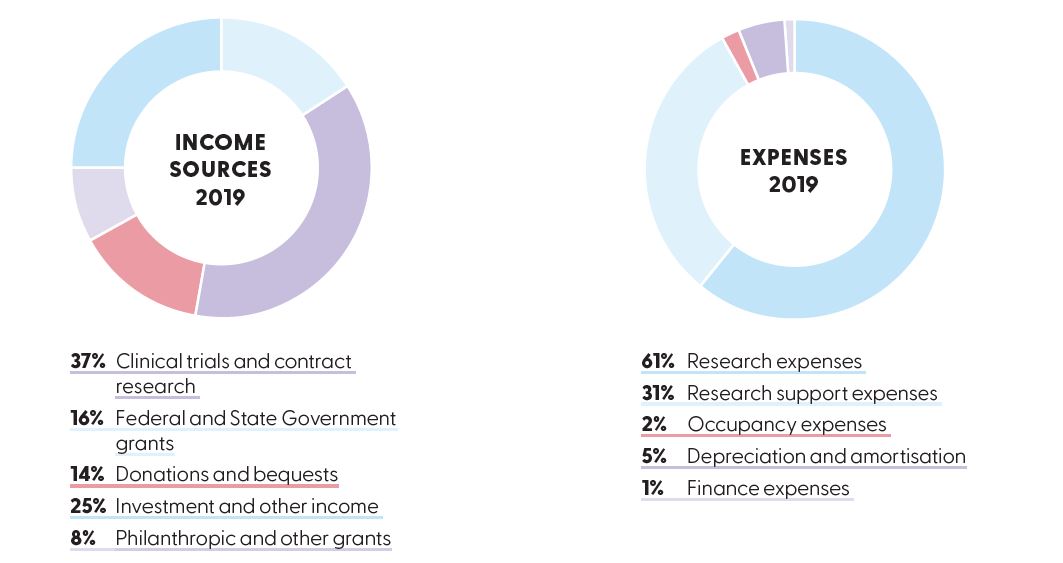News
Donors making a difference to vision research
The generosity of CERA supporters is critical in helping our researchers achieve their goal of a world free from vision loss and blindness.
The unprecedented events of 2020 have created great uncertainty in our community, but a donation to eye research can continue to offer hope for people and their families experiencing eye disease.
CERA’s Head of Philanthropy and Fundraising Sarah Rainbird says that despite the difficult year, characterised by COVID-19 lockdowns, CERA researchers continued to advance their research.
“We know our supporters are passionate about the transformative potential that our research has to save people’s sight and restore vision, and this has inspired our researchers to keep working towards that goal,’’ she says.
“It’s been extremely humbling to see donors continue to support us in 2020 – and it’s also been critical in helping our researchers keep vital research projects on track and one step closer to discoveries that could lead to new treatments and cures for eye disease.’’
Donors contribute to CERA’s research in many ways. They include through annual fundraising appeals and bequests, and from major gifts made by individuals, families, foundations and sub-funds to specific areas of research.
Donations can be made directly to CERA to support critical research projects. Most bequests can be directed to the CERA Foundation — CERA’s endowment established to ensure both the organisation’s financial sustainability and the careful, long term management of precious donor funds.
Philanthropic support is also provided by corporate partners who believe in our vision of a world free from vision loss and blindness.
Connecting researchers
CERA Board member and Board member of the CERA Foundation, Christine Edwards, is an experienced health care executive and former CEO of the Sidney Myer Fund and The Myer Foundation.
She says one of CERA’s strengths is how it connects researchers with supporters and helps them understand how their donation is making a difference, by giving people hope for the future.
“Donors want an organisation with a strong vision that can deliver on what they say they are going to do,’’ she says.
“They also need to know that the organisation is financially sustainable, and that their donation is going to research and not simply to prop up the bottom line.’’
CERA’s financial statements for 2019 illustrate the major contribution philanthropy makes to our research – with more than a fifth of our income coming from philanthropic sources.
This was more than our researchers received for what was a successful year of applications for competitive research from government schemes such as the National Health and Medical Research Council (NHMRC) and the Medical Research Future Fund (MRFF).
And as Ms Rainbird and Ms Edwards both point out – it’s those initial contributions from philanthropy that often provide a springboard to NHMRC and MRFF success.
“Many of the successes of our researchers are only possible because of the initial support from loyal and generous donors,’’ says Ms Rainbird.
“They help researchers develop proof of concept for bold ideas that have limited supporting data, and initially may appear too left of field for conventional funding programs.’’

CERA’s income sources and expenses for 2019.
Encouraging innovation
“Philanthropy is sometimes about taking a risk to go into places that government funding can’t, won’t or shouldn’t,’’ says Ms Edwards.
“It’s where people feel they can invest in something that will really make a difference and they can be involved in something on the cutting edge that’s exciting.
“In the area of gene and cell therapy, there’s a real opportunity for donors to consider their early role in this research and to identify with the successes that are involved along the way.’’
Ms Edwards says the CERA Foundation’s (CERAF) governance ensures donors’ funds are allocated to projects that will have a clear impact on tackling eye disease and improving eye health.
And, as many of the Foundation’s funds come from bequests, the Foundation makes sure that bequestors’ wishes are honoured.
“A gift provided by a bequest is both symbolic and significant. It represents somebody’s legacy,’’ she says. “It’s an enormous responsibility and privilege to ensure it is committed to research that will have an impact.’’
Donate to CERA
With your support, there’s hope in sight.
Your gift will contribute to our world-leading vision research, making a real difference to people affected by vision loss and blindness.
